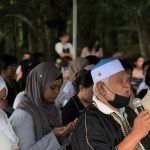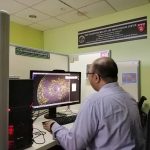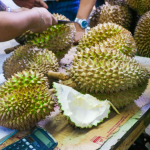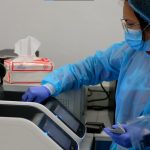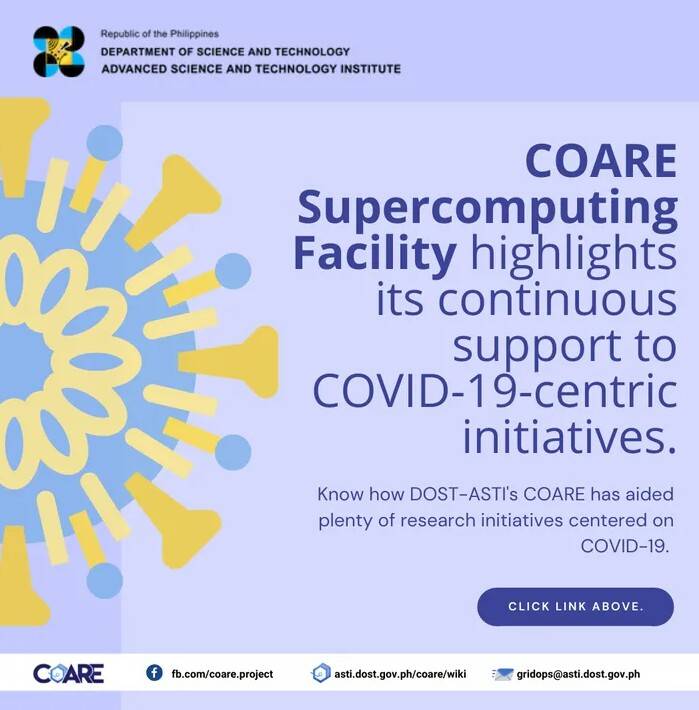DAVAO CITY, Philippines — The University of the Philippines Mindanao rededicated a masjid inside its campus in Mintal, Davao City during a short ceremony on 14 September.
Category: MINDANAO
Philippine Genome Center (PGC) Mindanao in UP Mindanao embarks on a new research partnership designed to develop solutions and strategies for primary health problems of women and children in Mindanao.
The Remote Retinal Evaluation Collaboration in Health: Diabetic Retinopathy (REACH-DR) was initiated by the University of the Philippines Mindanao as a forecasting tool developed to guide the formulation of rabies control strategies in Davao City.
Researchers of the University of the Philippines Mindanao (UP Mindanao) are set to develop a non-invasive grading system and maturity estimation model for Durian using Artificial Intelligence and Imaging through a project with the Department of Science and Technology (DOST) Science for Change Program (S4CP). Davao is the largest grower of Durian in the country […]
PGC Mindanao, in collaboration with Southern Philippines Medical Center (SPMC) Sub-National Laboratory and the Regional Epidemiology and Surveillance Unit (RESU) of the Department of Health Region (DOH) 11, successfully sequences its first samples for SARS-CoV-2 biosurveillance using Next Generation Sequencing technology.
Three research projects for the study of SARS-CoV-2 and disease outbreaks that are being undertaken by UP Mindanao and UP Diliman are utilizing the DOST Advanced Science and Technology Institute’s Computing and Archiving Research Environment (COARE) Supercomputing Facility.
THE University of the Philippines-Philippine Genome Center (UP-PGC) satellite facility in UP-Mindanao (UP-Min) is expected to conduct whole-genome sequencing (WGS) to detect Covid-19 variants before the end of the year.
Dr. Rachel Joy Pasion, DOH-Davao Regional Epidemiology Surveillance Unit head, said in a virtual presser on Tuesday, August 31, 2021, that the UP-Min PGC is targeted to operate by November this year.
Based on their initial meetings, Pasion said the operation of UP-Min PGC is still waiting for funding for the operation of the facility.
The Department of Biological Sciences and Environmental Studies (DBSES) and Department of Food Science and Technology (DFST) and the Department of Humanities (DH) of UP Mindanao in partnership with the Philippine Genome Center (PGC) Mindanao put forward a public service program for Mindanao researchers and collaborators through research assistance coupled with technical support on species identification. The sets of data generated from this research may contribute to a broad range of applications from taxonomy, biodiversity conservation programs, and opportunities for bio-economy in Mindanao that can significantly help Philippine biodiversity.
Several Japanese and Philippine institutions are teaming up to conduct a study on water-related disaster risks and enhance flood management in the country, particularly in the Pampanga River basin and Pasig-Marikina River and Laguna Lake basin.
The Japan International Cooperation Agency (JICA), along with International Centre for Water Hazard and Risk Management (ICHARM), Public Works Research Institute in Japan, and University of the Philippines Los Baños (UPLB) are working on research for the project development of a Hybrid Water-Related Disaster Risk Assessment Technology for Sustainable Local Economic Development Policy or HyDEPP to help address global issues like climate change.
The University of the Philippines (UP) Mindanao and Davao del Norte State College (DNSC) held on 21 May 2021 an online Presentation of Outputs and Virtual Turnover of Maps of their project,“Vulnerability Assessment of Coastal Areas in Davao Gulf to Climate-related Hazards” for the funding agency, the Commission on Higher Education (CHED) under its DARE TO (Discovery-Applied Research and Extension for Trans/Inter-disciplinary Opportunities) Program.
Project Leader and UP Mindanao Professor Annabelle Novero presented the Project Overview and Summary of Accomplishments, naming the cities and municipalities involved, the trainings provided, the maps and publications produced, to CHED Senior Research Grants Officer Jamie Sese and local government officials who attended online.

